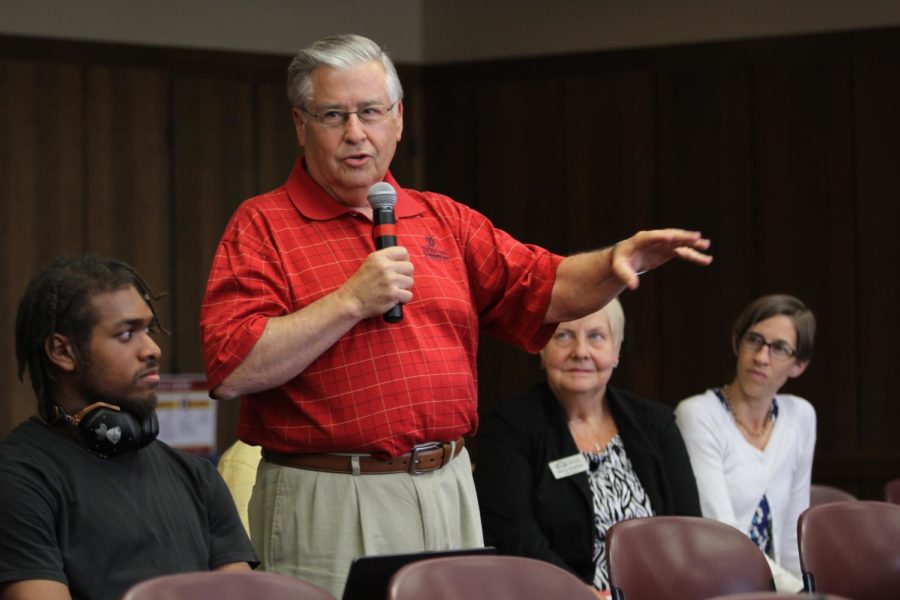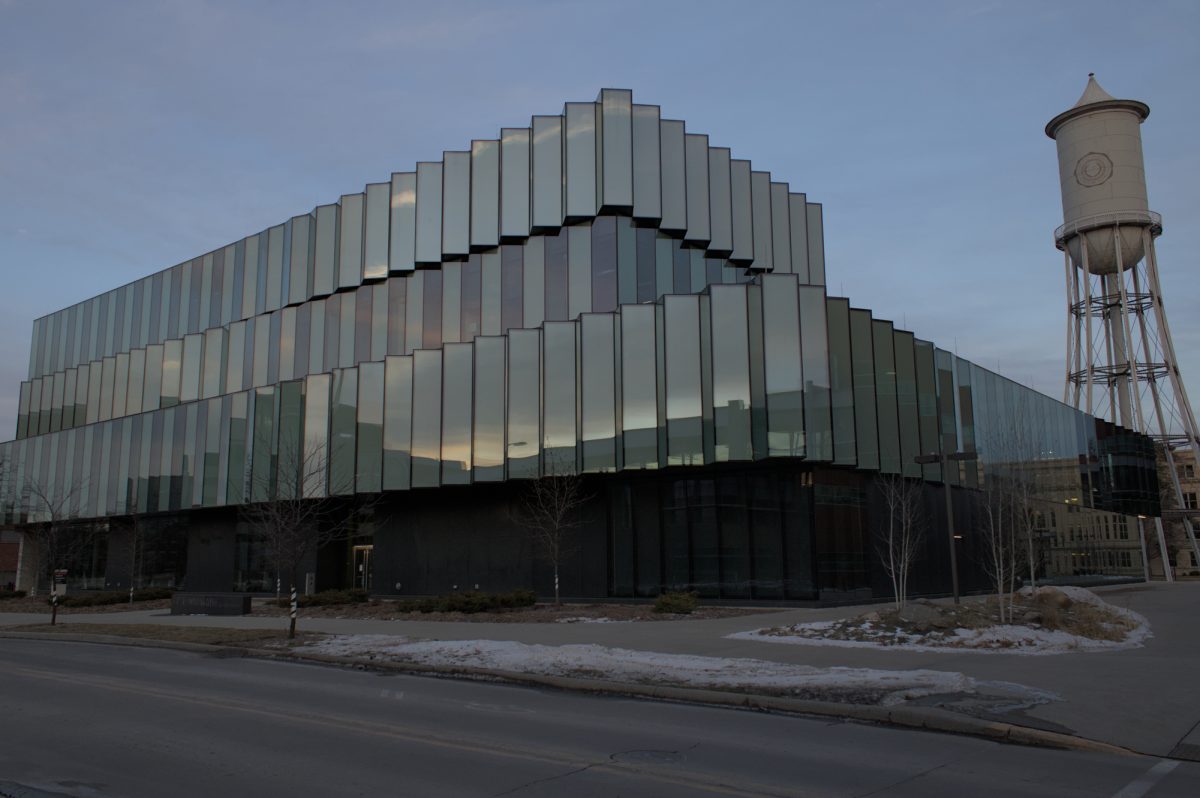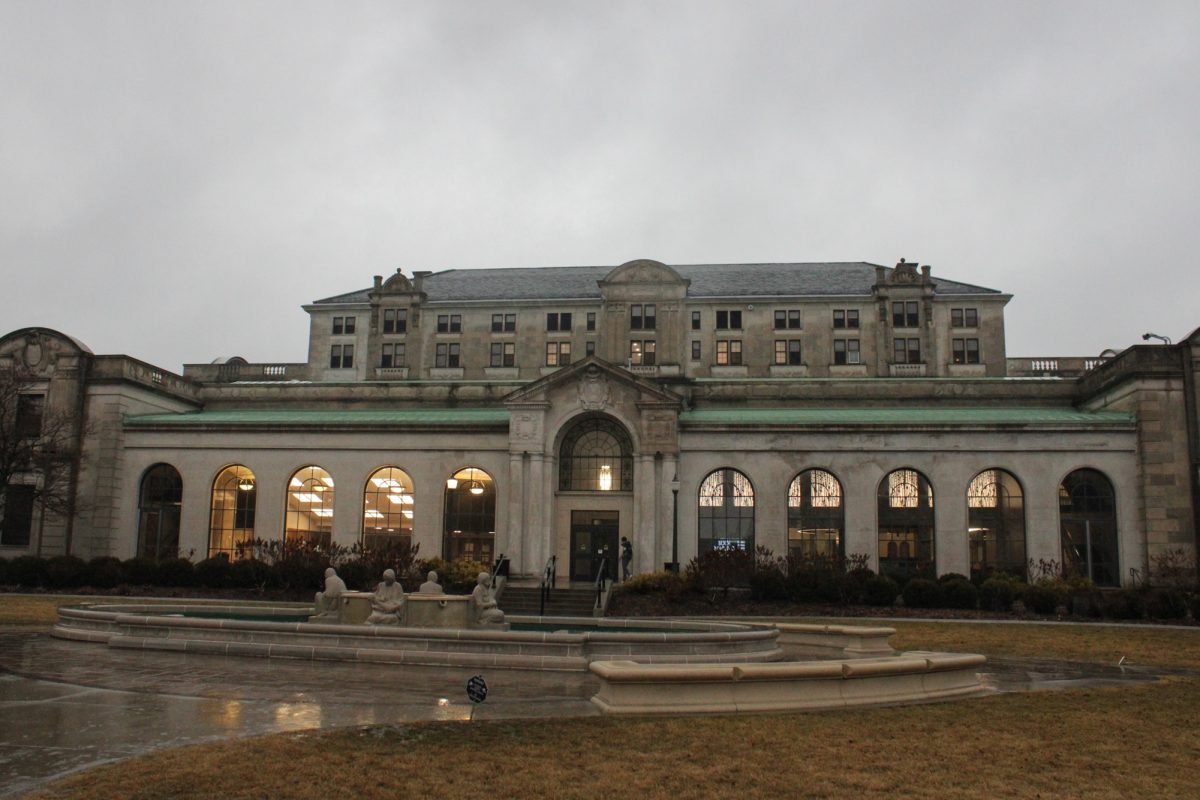Iowa State presents tuition plan with 7 percent raises each year
August 9, 2017
The Board of Regents heard a proposed plan from Iowa State University on tuition. Although nothing has been approved, the plan offers guidelines for moving forward in the future.
“It is time to be proactive and not reactive as we have been,” said Larry McKibben, chair of the tuition task force. The statement has been given often after fall 2018 tuition was raised not once, but twice this last spring.
$30 million cuts in state funding, concerns on keeping and paying qualified faculty, access to college for first generation students and the timing for tuition raises were the reasons behind the creation of the task force, McKibben said.
“We have heard from [the universities] they cannot raise salaries even to the cost of living,” McKibben. “Change is here.”
The task force asked each university to present a plan, and then hold a public forum following. The plans would examine the core issues and strategies central to the process of setting tuition at the three Regent Universities.
The plans are just proposals at this point to guide the Board of Regents in the future.
Iowa State proposed tuition increases
The tuition proposal presented by Iowa State administration Benjamin Allen, Jonathan Wickert and Miles Lackey was an annual 7 percent increase for resident undergraduates, an annual 4 percent increase for non-resident undergraduates, and differential adjustments for engineering, business and additional STEM programs.
This comes out to an increase on the base tuition of $522 dollars in fall of 2018 and $684 increase between fall of 2021 and fall of 2022. Non-residents see an increase of $852 in fall of 2018 and $996 dollars between fall 2021 and fall of 2022. Graduate costs, international student costs and the differential tuition cost would all be added to that base level.
“To fulfill our mission and level of quality our students and all Iowans expect and deserve, we need the resources to make real investments,” Allen said. “This five year plan will allow us to make significant progress on our strategic priorities, and we believe this is a proactive, reasonable approach for our students and their families.”
When asked his response to students who may consider each increase alone as a substantial amount of money, Allen said he anticipates pushback on what the Board allows them to do.
“We will emphasize, push our financial aid, we’ll make sure our foundation pushes scholarships, and the fact is as some of these numbers indicate, these are still good investments as you go into these programs,” Allen said.
Allen said they did hope the state would improve with funding and they can back off of the increases, and they will emphasize scholarship options for students.
“Unfortunately, we need to have those funds,” Allen said.
Boettger asked about a four-year commitment instead of increases each year, so incoming students know the exact amount when they choose to come to the university. Allen said it was considered, but then the number would have to be higher to accommodate for potential changes in state funding, such as another loss.
Allen said in the event that state funding changed, either to be greater or less, the proposal would be revisited. He also recognized that the university is likely to lose some students from the increases. He said there was potential additional increases could be considered if more state funding is decreased.
Quality is priority
“If we don’t maintain quality, the degree becomes less valuable,” Allen said. “Without these funds, we can’t maintain that quality.”
Allen said that high quality across the university is at risk, because of the stress on faculty to compete with other institutions, the student to faculty ratio and STEM facilities and large lecture halls at or beyond capacity.
Priorities to protect quality of the education experience were faculty and staff retention and recruitment, building maintenance and capacity and need-based financial aid.
There were several programs ranked highly nationwide at Iowa State. Perhaps what stands out most is the Veterinary Diagnostic Laboratory, which is the only one in Iowa and supports Iowa’s $14 billion animal agriculture industry, according to Allen’s report. That lab attracts high-quality faculty, which then insures the quality of the lab.
One goal is to decrease student to faculty ratio to 16:1 by adding 330 new faculty, particularly in STEM related fields. Those faculty are more costly to attract and to house, due to lab and equipment needs in those fields, Allen said.
900,000 square feet of new building capacity is another goal, alongside deferred maintenance. Kildee Hall’s lecture hall is listed as needing renovations, but at a multi-million dollar expense, Allen said. A lab for 30-some students has over 70. Classes run until 10 p.m. on weekdays.
The increases were set based on assumptions that state funding and enrollment would remain the same for the next five years, the Higher Education Price Index (HEPI) raising 2.14 percent (the average of the last five years, Allen said) and a 2.25 percent cost reallocation.
“It took us a decade to reach this imbalance,” Allen said. “It would be unreasonable and imprudent to thank that we can fix this in just one year.”
Regent Rachael Johnson questioned whether maintaining flat enrollment was the right enrollment for Iowa State. Allen responded yes – with more funding.
“I think 35, 36 thousand is reasonable… I think we can accommodate the 35, 36 thousand students,” Allen said.
Iowa State’s environment
Students
Enrollment has risen 37 percent, from 26,856 in 2009 to 36,660 in 2017. State appropriation per resident student has decreased 30 percent in the same period. From $12,705 per student to $8,962 per student.
Allen emphasized that Iowa State University students benefit the state. More students in 71/99 Iowan counties chose Iowa State, according to Allen’s presentation. 28 percent of undergraduates are first generation. 52 percent stay in Iowa after graduation.
Land-grant mission
Iowa State, as the only land-grant institution in Iowa, promotes it’s student-centered focus. Iowa State is also set aside as one of only 18 land-grant schools that also is in the Association of American Universities, adding research-intensive emphasis on faculty excellence and quality graduate and professional programs.
The land-grant mission was used by Iowa State to outline the tuition plan. Providing access to higher quality education for a diverse student body, leading innovation in research to improve lives and extending knowledge to benefit the state, nation and world are all part of the land-grant mission.
Faculty
“Over the past decade we have stretched our employees to a breaking point,” Allen said.
Faculty raises were cancelled this year. In a letter to staff, Allen said:
“It boiled down to this: could we justify a second consecutive, last-minute tuition increase to fund pay raises at the expense of funding critical student programs and services? After thoughtful discussion, input, and feedback, I came to the conclusion that we simply could not.
State funding cuts and subsequent last-minute tuition hikes place a difficult burden not only on our students but also on you, our faculty and staff. I will deliver this message today to the Board as well as the importance of competitive compensation to retain our valuable employees.”
How Iowa compares nationally
Regent staff member Rachel Boon provided a national context prior to the university’s presentation.
Nationally, state funding for higher education is down, Boon said. Iowa State is often compared to it’s peers as the lowest tuition level in the group, but as a comparison by state, the state of Iowa compares mostly to Arkansas and Missouri for in-state students.
Iowa Regent tuition Increases are among the lowest in the country over the past five years, similar to Wisconsin, Indiana, Minnesota and Ohio. Those states have higher tuition costs, however, so the same size increase has a bigger net revenue, Boon said.
Tuition isn’t the only component. Students also pay through financial aid and loans.
Institutional aid for undergraduates is increasing faster than tuition, but state aid has not shown similar growth, Boon said. About 6 percent of state aid that was offered was awarded last year to about 31 percent of Iowa undergraduate residents.
“Iowa has the lowest percent of need-based aid going to public college students than any other state in the country,” Boon said. “The gap between Iowa and Vermont, which is number two, is pretty large.”
Of the third component, 32 percent of bachelor’s degree recipients graduate without debt in Iowa, Boon said.
The Regents will also introduce a financial literacy effort with a new mandatory undergraduate training course. All new undergraduate students will have to complete the training.







